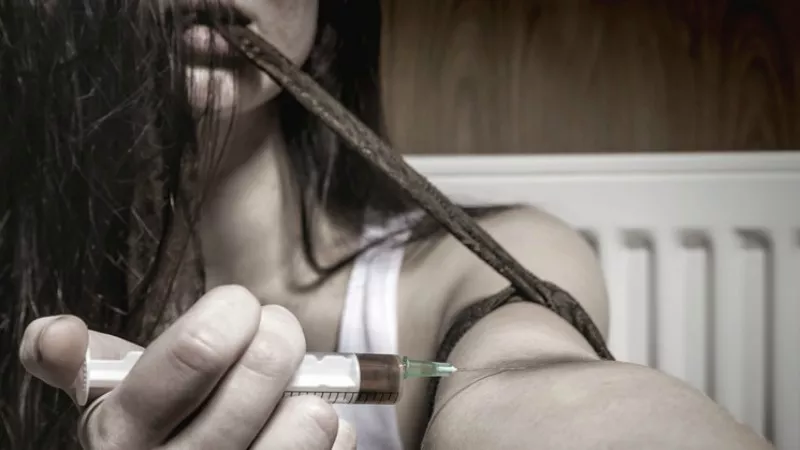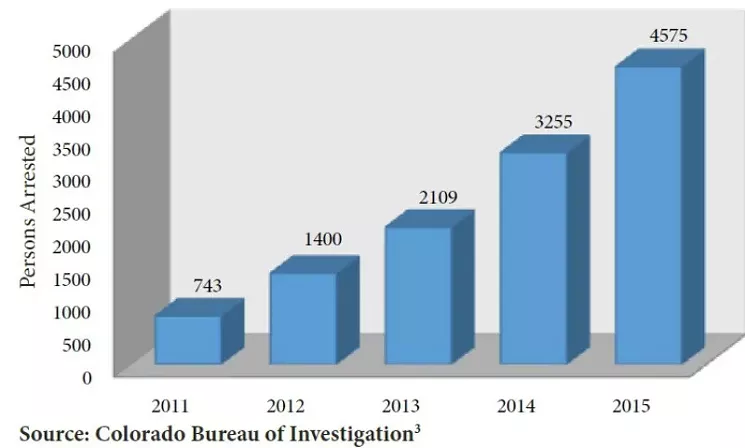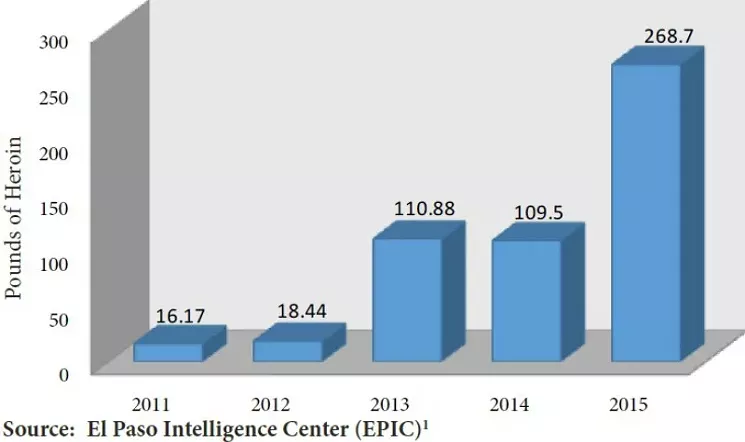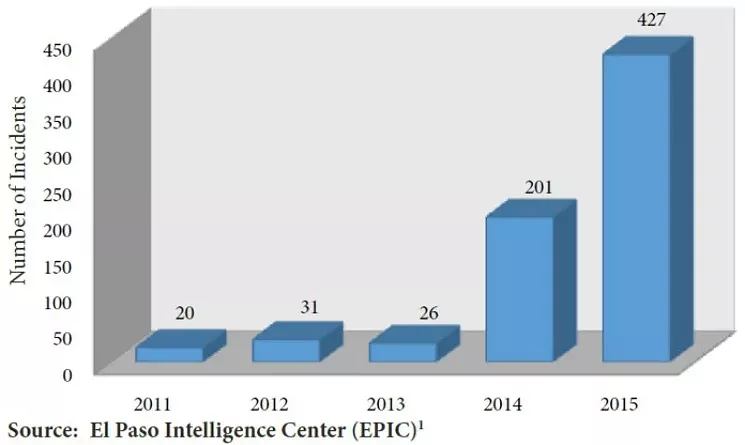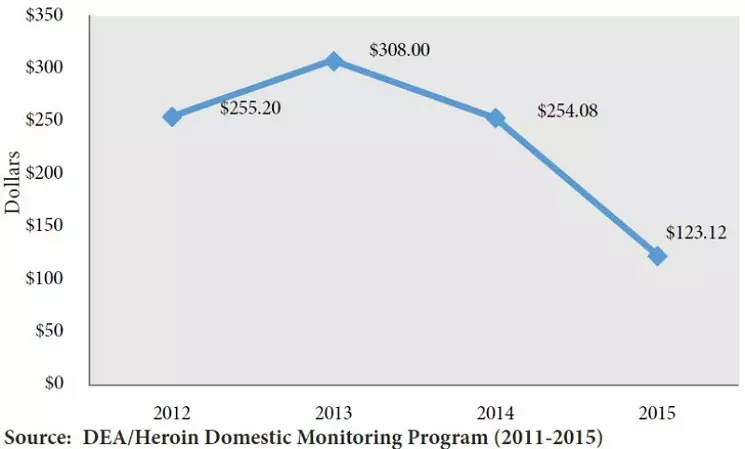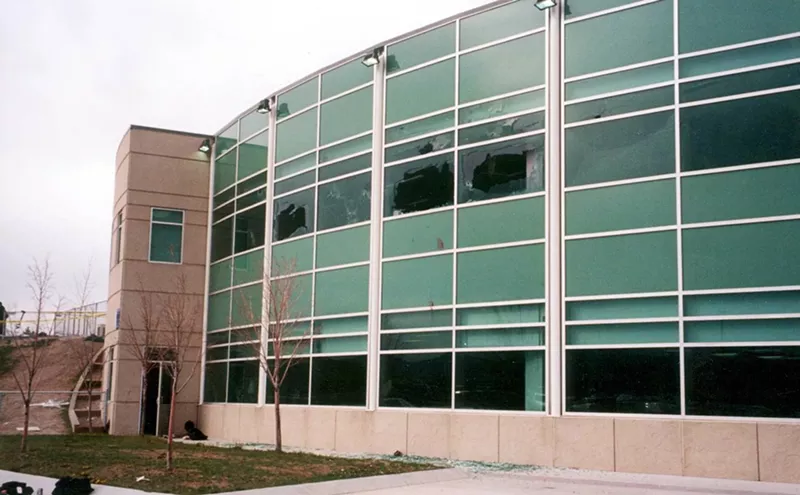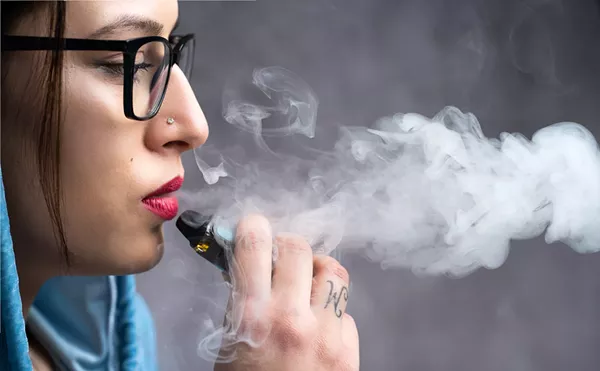A disturbing new report unveiled today, April 6, by the Colorado Department of Public Health and Environment reveals that heroin deaths in Colorado doubled in four years despite an enormous increase in seizures and arrests related to the drug over the same interval. Among the factors for the rise cited in the document, titled "Heroin in Colorado," is the price, which tumbled by over 60 percent during a two-year period.
The report, on view below in its entirety, was more than a year in the making, with a December 2015 meeting of various stakeholders from law enforcement and public-health agencies leading to the formation of a Heroin Response Work Group. The latter collected data from various sources that focused on the years 2011 to 2015 — a shorter span than the one represented by information the CDPHE provided to Westword for a post published last month. As we reported, heroin deaths in Denver increased 933 percent from 2002 to 2016, and Colorado heroin fatalities rose 756 percent between 2001 and last year.
From 2011 to 2015, the report notes, the number of heroin fatalities in Colorado went from 79 to 160. The age-adjusted rate of heroin-related overdose deaths escalated by nearly as much, 93 percent; in 2011, there were 1.5 deaths per 100,000 Colorado residents, as compared to 2.9 deaths per 100,000 Colorado residents in 2015.
Hospitalization rates for heroin-related incidents increased by a smaller amount, 41 percent. The number of hospitalizations per 100,000 Colorado residents was 2.07 for 2011, 2.92 for 2015. But age-adjusted emergency-room visits for reasons related to heroin were much higher, more than doubling, from 4.45 per 100,000 in 2011 to 9.28 in 2014.
These last numbers would certainly have been even more inflated had it not been for Naloxone, a substance described in the report as an "opioid antagonist" that quickly counters overdose effects from heroin and similar substances in many cases. Emergency medical service providers used Naloxone during 997 incidents in 2011 and 3,393 in 2015. That's a 240 percent increase.
Police agencies have historically tried to enforce such problems away — but other information in the report suggests the limits of such an approach.
The following graphic shows that persons arrested for heroin in Colorado went from 743 in 2011 to 4,575 in 2015, or just shy of 516 percent.
The contrast is even sharper between the 16.17 pounds of heroin seized in Colorado circa 2011 and the 268.7 pounds grabbed in 2015, as displayed in a second graphic. The difference in this case is 1,562 percent.
Bigger still is the rise in Colorado heroin-seizure incidents. As seen in graphic three, there were twenty in 2011 and 427 in 2015 — a 2,035 percent boost.
But these busts, confiscations and police contacts couldn't overcome heroin's increasing affordability. The cost per gram of heroin climbed from $255.50 in 2012 to $308 the next year before plummeting to $123.12 in 2015; see graphic four below.
Moreover, the report points out that these prices "are based on a pure milligram of heroin purchased in Denver through the DEA Domestic Monitoring Program." On the street, a gram of heroin typically sells for less than $100.
In recent years, advocates such as Art Way of the Drug Policy Alliance have argued that the best way to tackle heroin abuse is by treating it as a public-health issue. Earlier this year, for example, Way told us about an innovative proposal in which the Colorado Department of Human Services, in conjunction with Governor John Hickenlooper's office, formally requested that the General Assembly allocate more than $6 million annually from the state's marijuana-tax cash fund for a new program that would offer help to chronic drug users as opposed to criminalizing them.
There's no denying the health-related ripple effects from increasing heroin use. The report shows that potential hepatitis C cases related to injection-drug use rose 80 percent from 2011 to 2015, and instances of neonatal abstinence syndrome (babies born addicted) climbed by 83 percent.
But the report's conclusion doesn't champion one tactic over another. Rather, it calls for "a coordinated response to the ongoing issue. This will require a joint effort by the law enforcement, prevention, treatment and recovery communities working together to curb the harmful impact heroin is having in Colorado."
Here's the complete report.

Audio By Carbonatix
[
{
"name": "GPT - Billboard - Slot Inline - Content - Labeled - No Desktop",
"component": "23668565",
"insertPoint": "2",
"requiredCountToDisplay": "2"
},{
"name": "STN Player - Float - Mobile Only ",
"component": "23853568",
"insertPoint": "2",
"requiredCountToDisplay": "2"
},{
"name": "Editor Picks",
"component": "17242653",
"insertPoint": "4",
"requiredCountToDisplay": "1"
},{
"name": "Inline Links",
"component": "18838239",
"insertPoint": "8th",
"startingPoint": 8,
"requiredCountToDisplay": "7",
"maxInsertions": 25
},{
"name": "GPT - 2x Rectangles Desktop, Tower on Mobile - Labeled",
"component": "24956856",
"insertPoint": "8th",
"startingPoint": 8,
"requiredCountToDisplay": "7",
"maxInsertions": 25
},{
"name": "Inline Links",
"component": "18838239",
"insertPoint": "8th",
"startingPoint": 12,
"requiredCountToDisplay": "11",
"maxInsertions": 25
},{
"name": "GPT - Leaderboard to Tower - Slot Auto-select - Labeled",
"component": "17676724",
"insertPoint": "8th",
"startingPoint": 12,
"requiredCountToDisplay": "11",
"maxInsertions": 25
}
]

